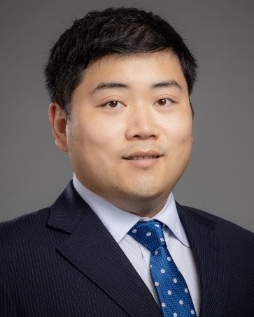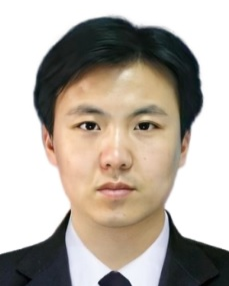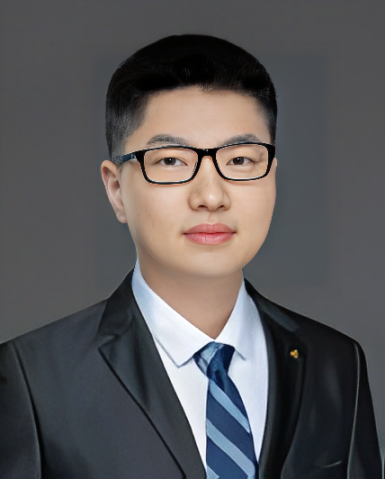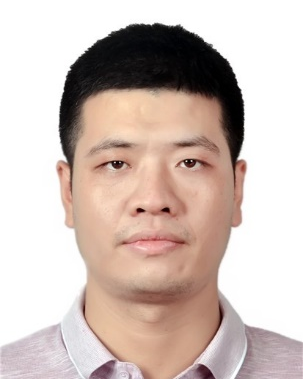 Prof. Weinan Gao Northeastern University, China |
Biography: Weinan Gao received the Ph.D. degree in Electrical Engineering from New York University, Brooklyn, NY, USA. He is a Professor with the State Key Laboratory of Synthetical Automation for Process Industries at Northeastern University, Shenyang, China. Previously, he was an Assistant Professor of Mechanical and Civil Engineering at Florida Institute of Technology, Melbourne, FL, USA, an Assistant Professor of Electrical and Computer Engineering at Georgia Southern University, Statesboro, GA, USA, and a Visiting Professor of Mitsubishi Electric Research Laboratory (MERL), Cambridge, MA, USA. His research interests include reinforcement learning, adaptive dynamic programming (ADP), optimal control, cooperative adaptive cruise control (CACC), intelligent transportation systems, sampled-data control systems, and output regulation theory. Prof. Gao is the recipient of the best paper award in IEEE International Conference on Control, Automation and Information Sciences (ICCAIS) in 2023, IEEE Data Driven Control and Learning Systems (DDCLS) Conference in 2023, IEEE International Conference on Real-time Computing and Robotics (RCAR) in 2018 and the David Goodman Research Award at New York University in 2019. He is an Associate Editor of IEEE Transactions on Neural Networks and Learning Systems, IEEE/CAA Journal of Automatica Sinica, Control Engineering Practice, and IEEE Transactions on Circuits and Systems II: Express Briefs, and a Technical Committee member in IEEE Control Systems Society on Nonlinear Systems and Control, IFAC TC 1.2 Adaptive and Learning Systems, and CAAI Industrial Artificial Intelligence.
Title: Learning-based Output Regulation and its Applications
Abstract: Output regulation is a general mathematical framework that designing controllers to achieve disturbance rejection and asymptotic tracking of a dynamic system. Reinforcement learning concerns how an agent interacts with unknown or uncertain environment to minimize the cumulative cost. As an important branch of reinforcement learning, Adaptive dynamic programming (ADP) is a data-driven and model-free approach for adaptive optimal control design of complex dynamic systems. In this talk, I will discuss how to leverage ADP as an efficient tool to address learning-based output regulation problems of linear and nonlinear dynamic systems.
 Prof. Bo Dong Shenzhen Technology University, China |
Biography: Bo Dong, male, is a Distinguished Professor at the School of Integrated Circuits and Optoelectronic Chips, Shenzhen University of Technology. He was selected for Shenzhen Overseas High-level Overseas Educated Talents Peacock Program B. He was selected for the Technical Excellence of Pioneer Action Hundred Program of the Chinese Academy of Sciences. He has been selected as one of the top 2% top scientists in the world by Stanford University and Elsevier. He is an expert in the evaluation of the National Science and Technology Prize as well as the National Key Programs. D. degree in Optics from Nankai University and Ph.D. degree in Electrical and Computer Engineering from National University of Singapore in June 2008 and December 2015, respectively. He was a postdoctoral fellow at Laurier University in Canada from 2008-2009, and worked as a scientist at A*STAR Research Institute of Infocommunications in Singapore from 2009-2017. He has led and participated in a number of collaborative projects with NRSERC (Canada), NRF (Singapore), 863 (China), NSF (China), and Airbus (Europe), ST (Singapore), SMRT (Singapore), etc. He is also a scientist at A*STAR Institute of Infocomm Research (Singapore). He has achieved a series of innovative results in photonic integrated devices, SAW/BAW chips, optoelectronic detection, etc. He has published more than 140 academic papers, applied for more than 30 patents and authorized more than 10. The results of the projects done were awarded the 2013 ASEAN Outstanding Engineering Achievement Award and Singapore Outstanding Engineering Achievement Award. He has been invited to give invited presentations at nearly 20 international conferences, and served as session chair and technical committee member of nearly 20 international conferences. He has served as a subject editor of Applied Optics, a prestigious optoelectronics journal of OSA, and as an editorial board member of Structural Monitoring and Maintenance, a journal of KAIST, Korea. He is a senior member of Optica and IEEE.
Title: Bulk Acoustic Wave (BAW)Tactile Sensors Based on Flexible Substrate
Abstract: Flexible tactile sensors, as core devices that simulate the tactile function of human skin, hold irreplaceable application value in fields such as robotic interaction, medical health, and smart wearables. Flexible tactile sensors based on Bulk Acoustic Wave (BAW) on flexible substrates combine the acoustic characteristics of BAW devices—such as high sensitivity and fast response speed—with the deformation adaptability of flexible substrates, making them one of the current research hotspots in the field of tactile sensing. The following systematically elaborates on the research in this direction from five dimensions: core concepts, research status, key technologies, application scenarios, and future trends.
 Dr. Wennian Yu Chongqing University, China |
Biography: Male, Ph.D. from Queen's University, Canada, Researcher and Doctoral Supervisor at the State Key Laboratory of Mechanical Transmission for Advanced Equipment, Chongqing University. His main research interests include gear system dynamics, mechanical system condition signal processing and condition monitoring, system condition degradation modeling, and remaining useful life prediction. He has presided over 8 government-sponsored projects, and published more than 90 papers (over 50 as first author/corresponding author), including 3 ESI Highly Cited Papers and 4 Best Papers from international academic conferences. He has also published one monograph entitled Dynamics of High-Speed Planetary Gear Transmission, and applied for more than 50 national invention patents (16 authorized). He was consecutively selected into Stanford University's Top 2% Scientists in the World for 2022, 2023, and 2024. His honors include the First Prize of National Defense Science and Technology Progress Award, the Special Prize of National Equipment Management and Technological Innovation Achievements, the Crossley Best Paper Award of Mechanism and Machine Theory, and Editor's Choice Article of Machines.
Title: Research on Digital Twin-Driven Wear Prediction Method for Pantograph Slides of Urban Rail Vehicles
Abstract: Excessive wear of pantograph carbon strip in urban rail vehicles directly affects electrical energy transmission and may lead to safety accidents during train operation. Traditional strip wear monitoring methods mainly rely on regular manual sampling inspection combined with offline image recognition, which have problems such as low efficiency in operation and maintenance decision-making and excessive maintenance. This report proposes a digital twin-driven strip wear prediction method. By constructing a digital twin model that reflects the actual wear process of the pantograph-catenary system and pantograph carbon strips, it can realize the online prediction of the service status and wear condition of pantograph carbon strips under long-term operation. This method is helpful to promote the transformation of the operation and maintenance mode of pantograph carbon strips from the traditional passive planned maintenance to an active early warning mode.
Assoc. Prof. Shengli Wu Chongqing Jiaotong University, China |
Biography: Male, Doctor of Engineering, Associate Professor, Cardiff University Academic Visitor. My primary research interests are equipment condition monitoring, dynamics of mechanical systems, and fault diagnosis using deep learning methods. Served as principal investigator for one project funded by the National Natural Science Foundation of China, one general project of the Chongqing Natural Science Foundation, and one project of the Chongqing Municipal Education Commission's Science and Technology Research Program. Published more than 20 papers in Journals including Engineering Failure Analysis, Journal of Energy Storage, Journal of Vibration Engineering & Technologies, Vibration and Shock, Journal of Traffic and Transportation Engineering, and Journal of Engineering Science.
Title: Analysis of the dynamic characteristics of gear tooth tip chipping and interpretable intelligent diagnosis methods
Abstract: Taking the tooth tip chipping fault in EHL as the main research object, the idea of torsional stiffness of tooth tip chipping fault is introduced, and the modeling method of time-varying meshing stiffness model of tooth tip fault is systematically expounded. The influence of tooth tip chipping fault size and tooth surface roughness on the time-varying meshing stiffness is clarified. The data processing method of multi-channel symmetric dot pattern (SDP) is studied, and the intelligent diagnosis of gearbox fault is carried out by combining multi-scale convolutional neural network and long-term and short-term memory network. At the same time, the importance of model input features is sorted by using the Shapley Additive Explanations (Shap) value method, which is used to analyze the influence of different feature combinations on model classification and specific fault identification.

